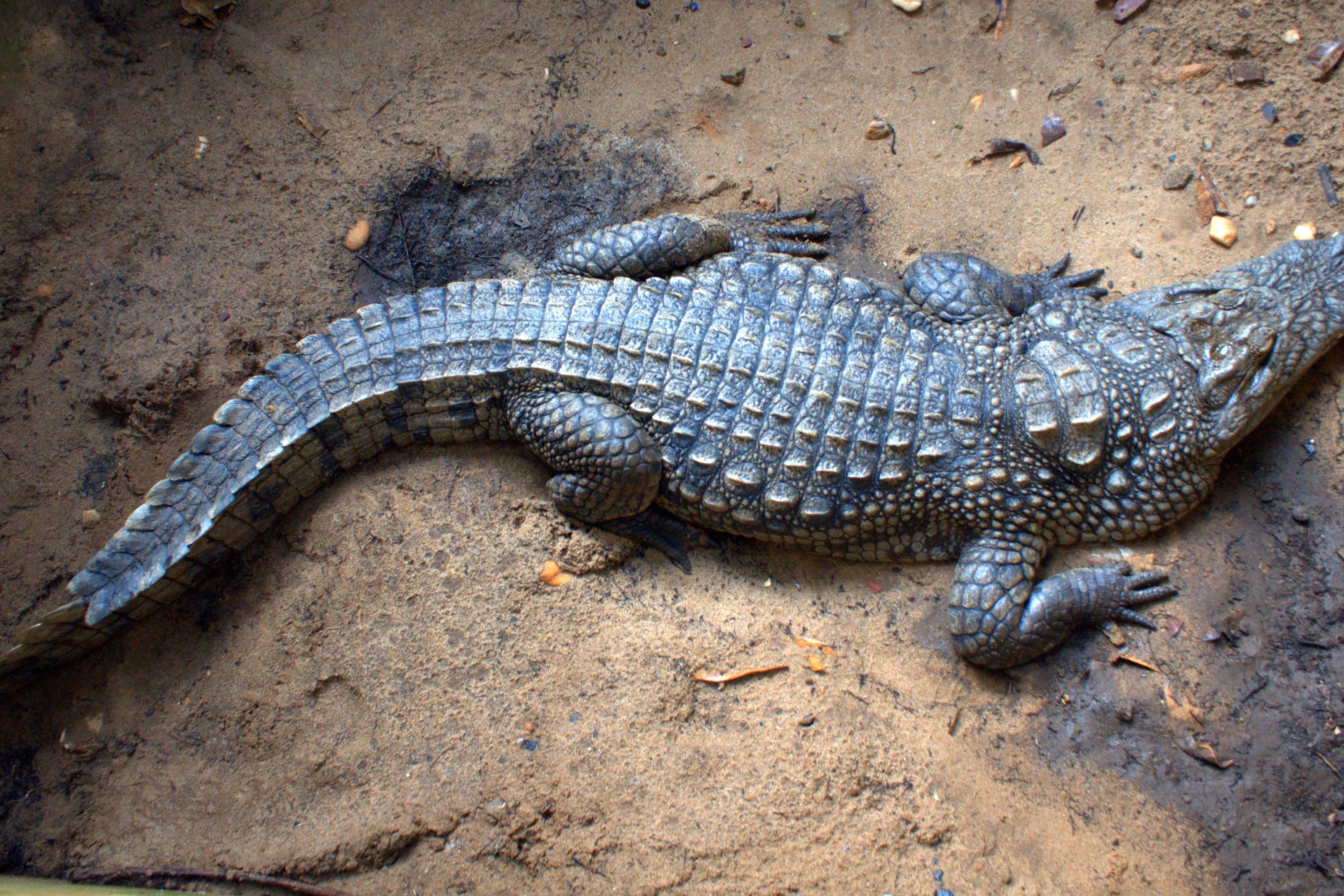West African crocodile
(Crocodylus suchus)

Description
The West African crocodile, desert crocodile, or sacred crocodile (Crocodylus suchus) is a species of crocodile related to – and often confused with – the larger and more aggressive Nile crocodile (C. niloticus). Compared to the Nile Crocodile, the West African Crocodile is smaller: Adults are typically 1.5–2.5 m (5–8 ft) long, and maximum is perhaps 3–4 m (10–13 ft). The species was named by Étienne Geoffroy Saint-Hilaire in 1807, who discovered differences between the skulls of a mummified crocodile and those of Nile crocodile (C. niloticus). This new species was, however, for a long time afterwards regarded as a synonym of the Nile crocodile. In 2003, a study indicated that C. suchus was a valid species, and this was confirmed by several other studies in 2011–2015. Despite the long history of confusion, genetic testing has revealed that the two are not particularly close. The closest relatives of the Nile crocodile are the Crocodylus species from the Americas, while the West African crocodile is basal to the clade of Nile and American crocodiles. The West African crocodile inhabits much of West and Central Africa, ranging east to South Sudan and Uganda, and south to Democratic Republic of the Congo (in all three countries it may come into contact with Nile crocodiles). Other countries where found include Mauritania, Benin, Liberia, Guinea-Bissau, Nigeria, Niger, Cameroon, Chad, Sierra Leone, Central African Republic, Equatorial Guinea, Senegal, Mali, Guinea, Gambia, Burkina Faso, Ghana, Gabon, Togo, Ivory Coast and Republic of Congo. As late as the 1920s, museums continued to obtain West African crocodile specimens from the southern Nile, but today the species has disappeared from this river.
Taxonomic tree:







